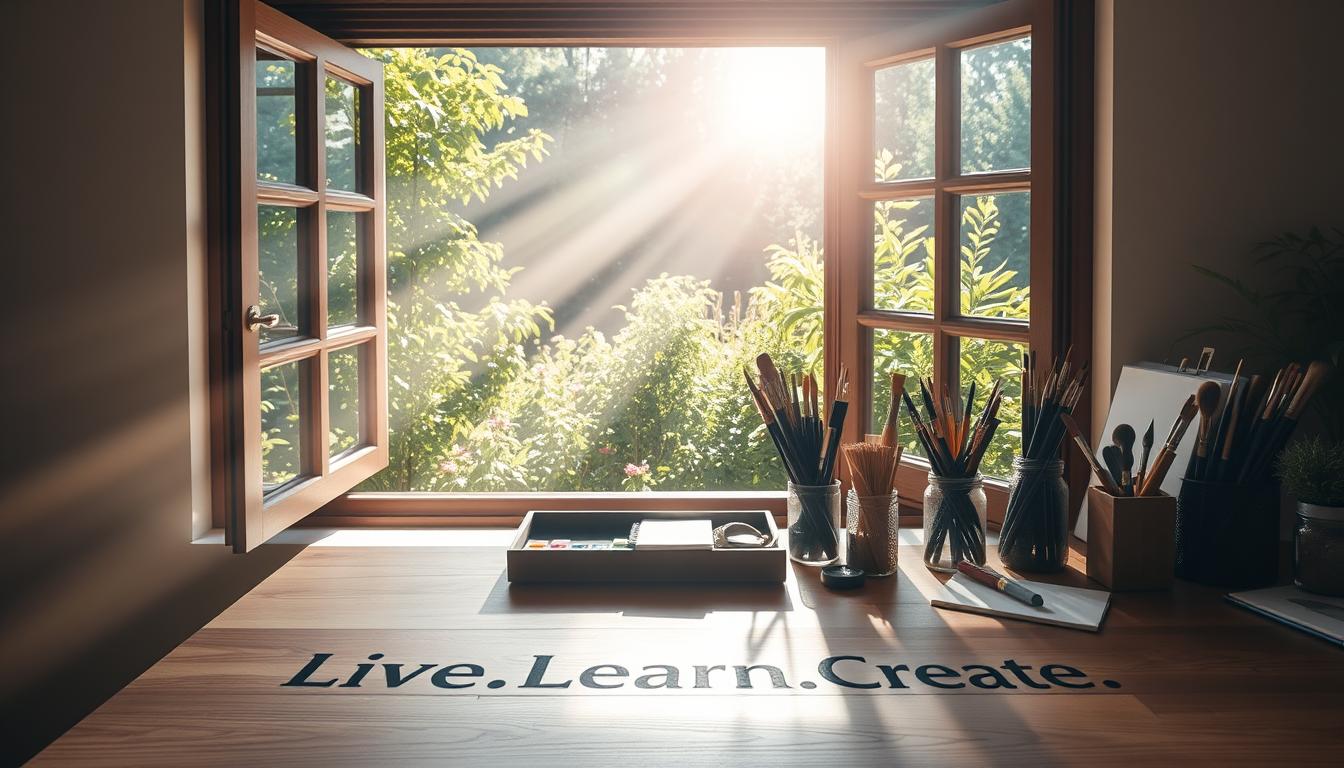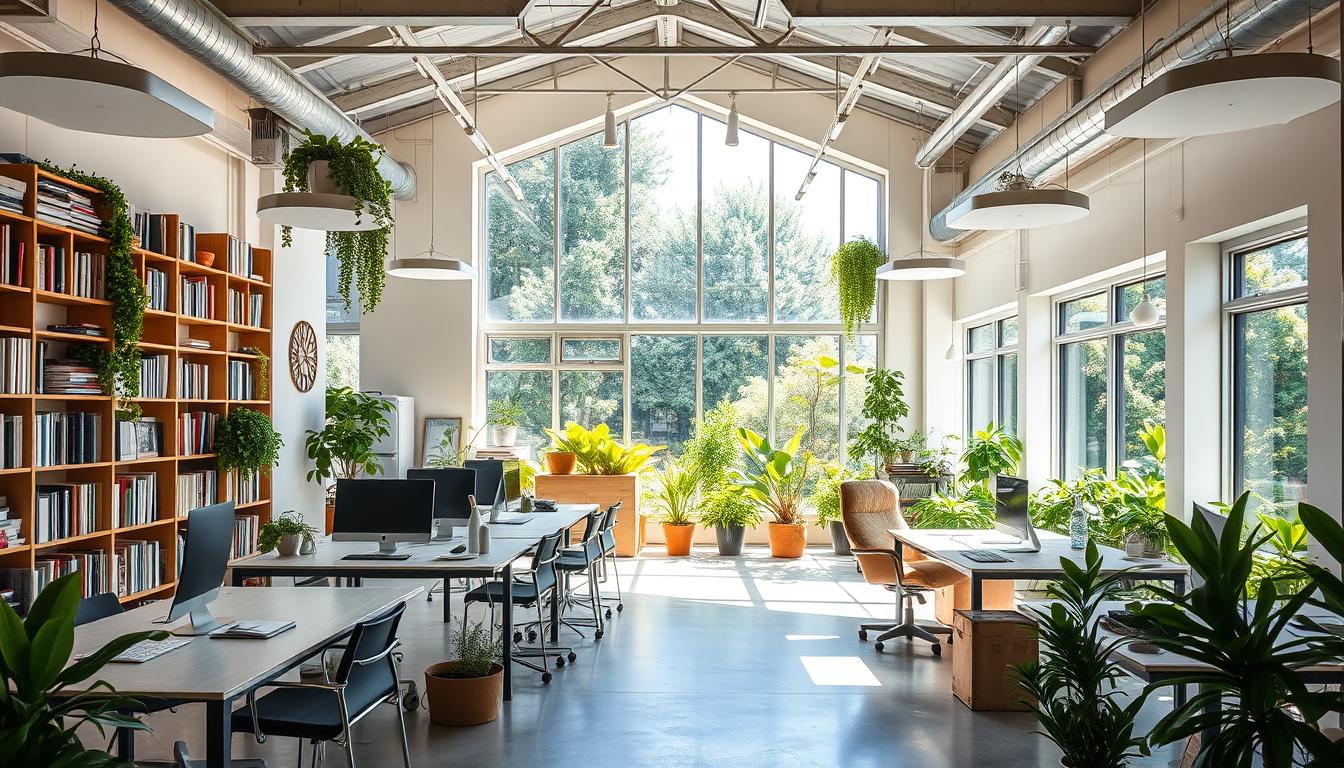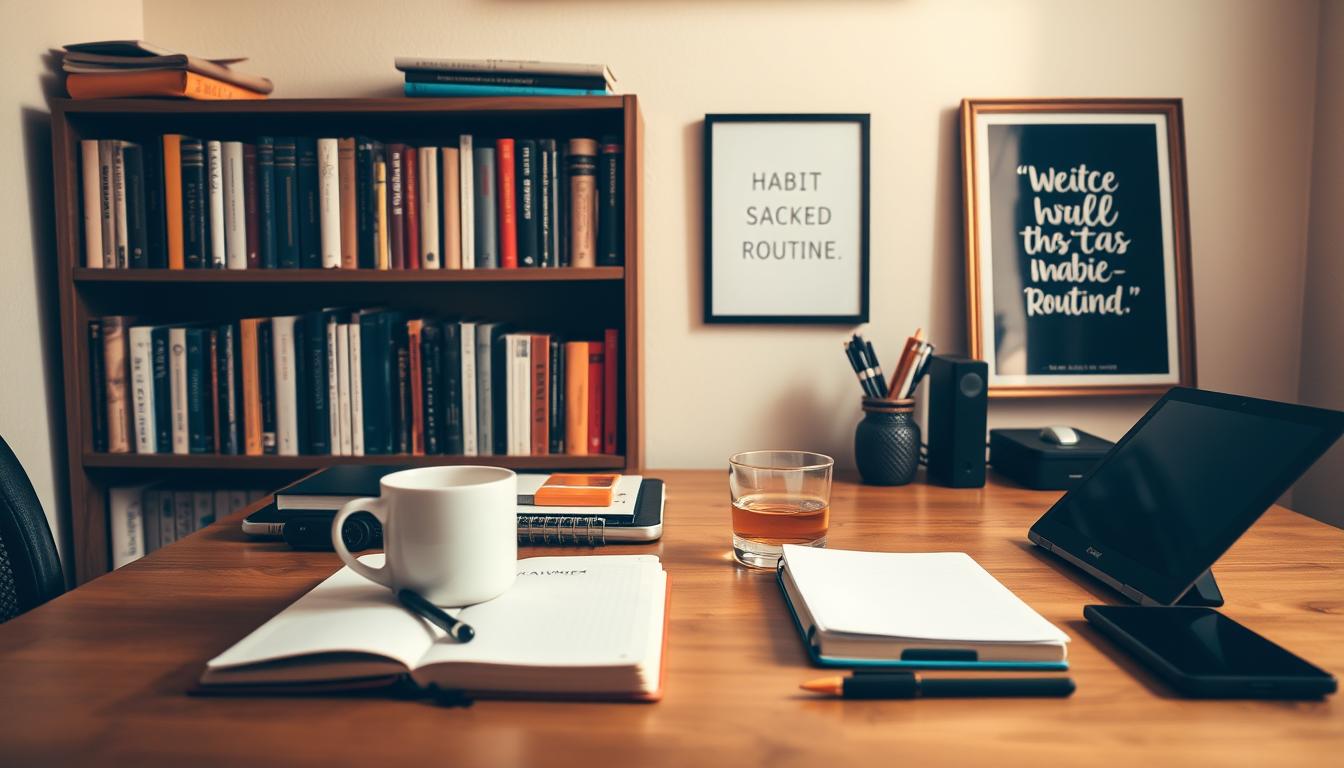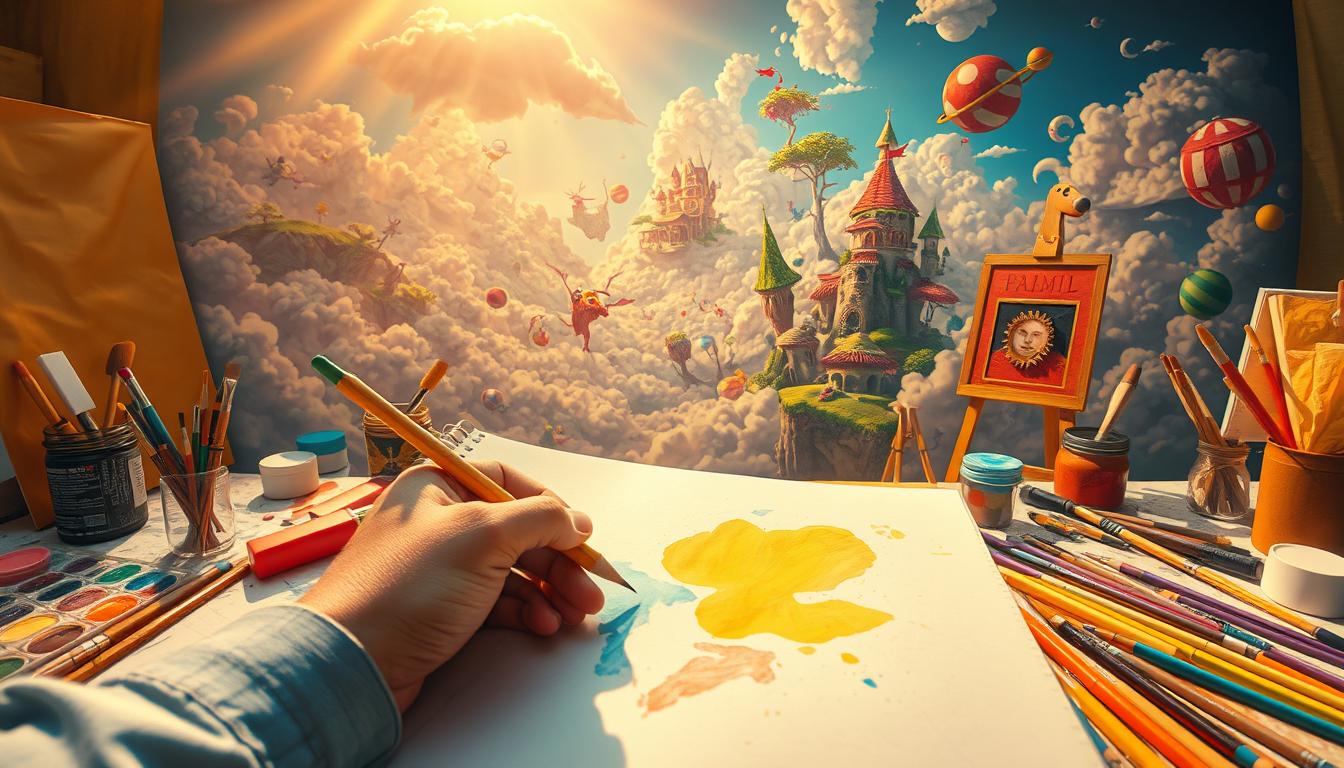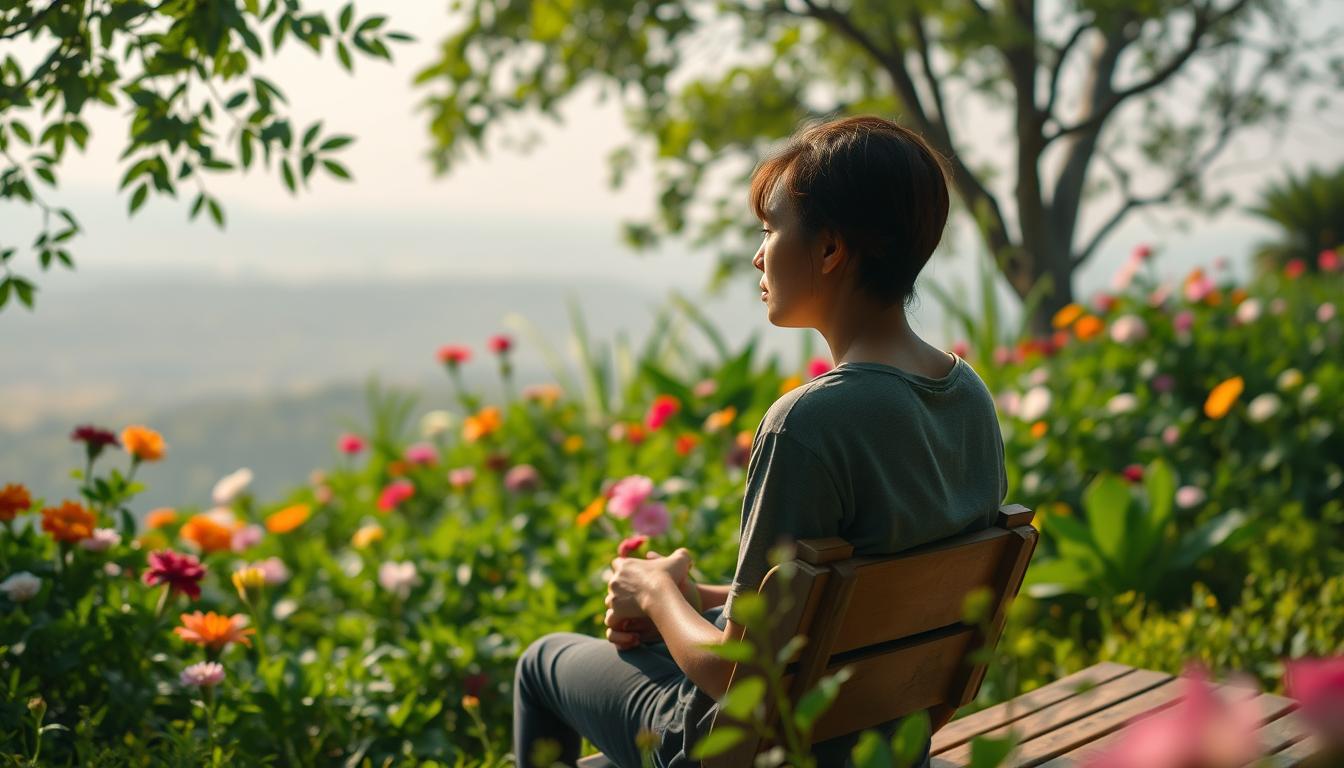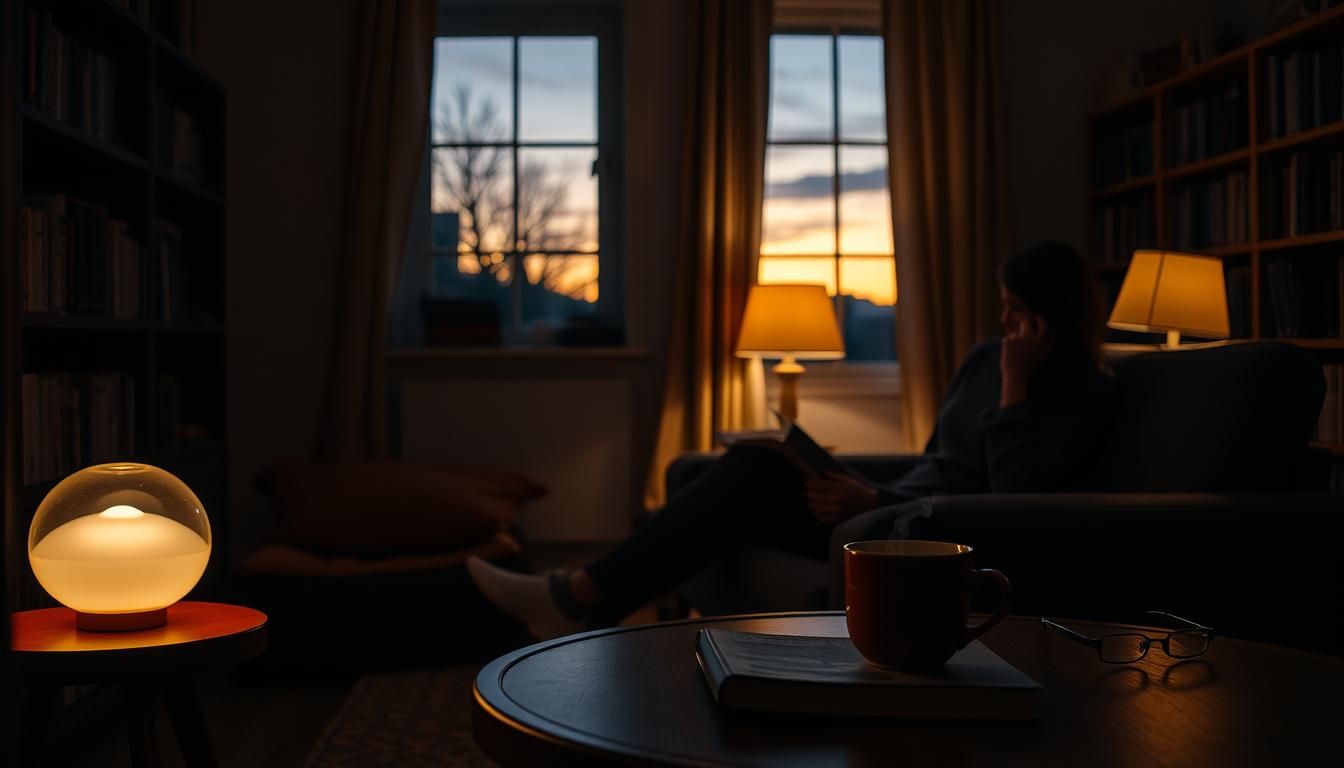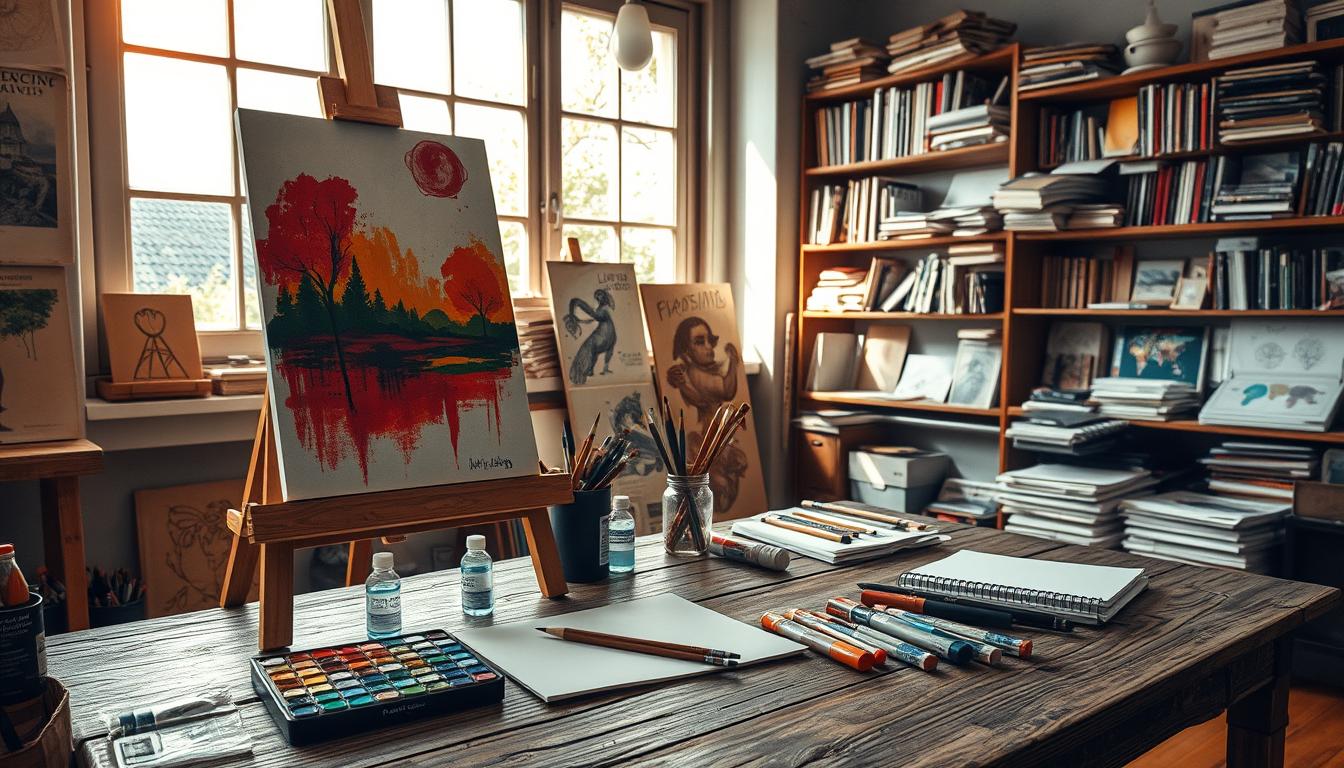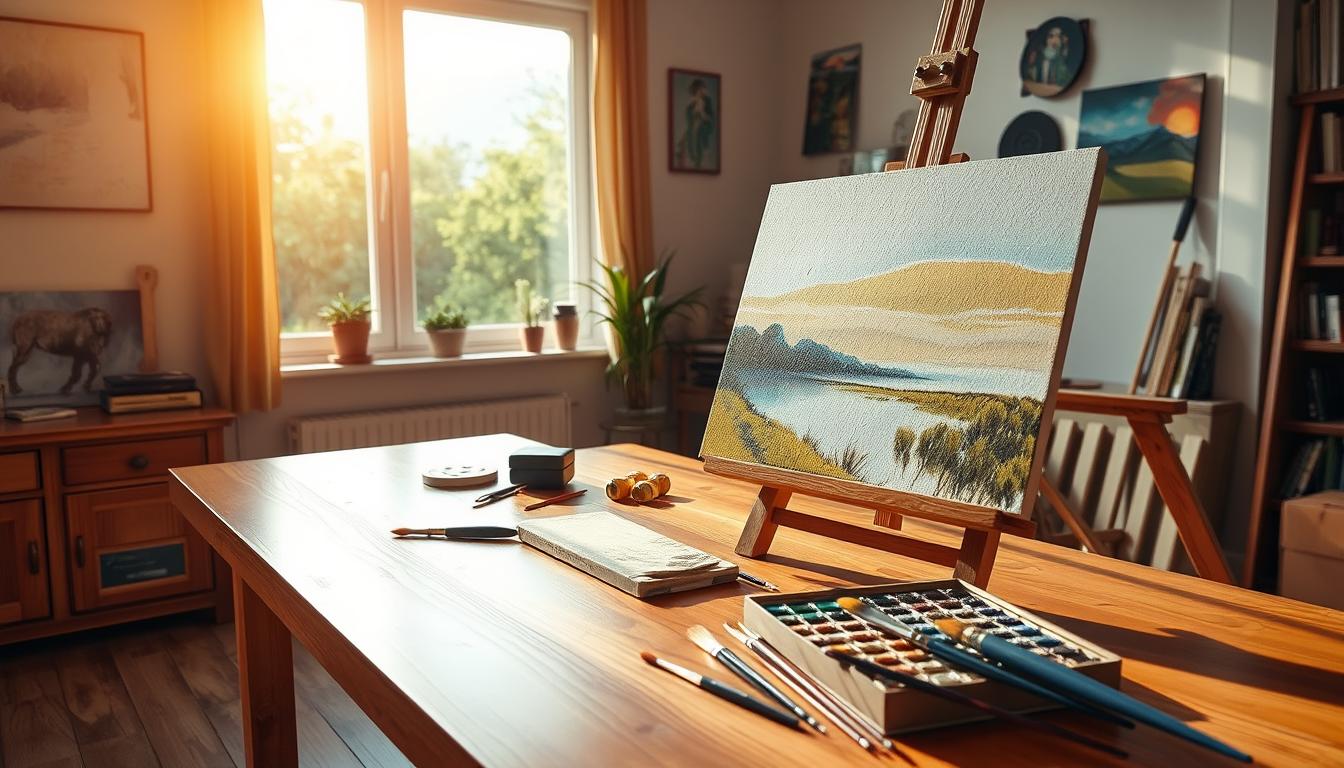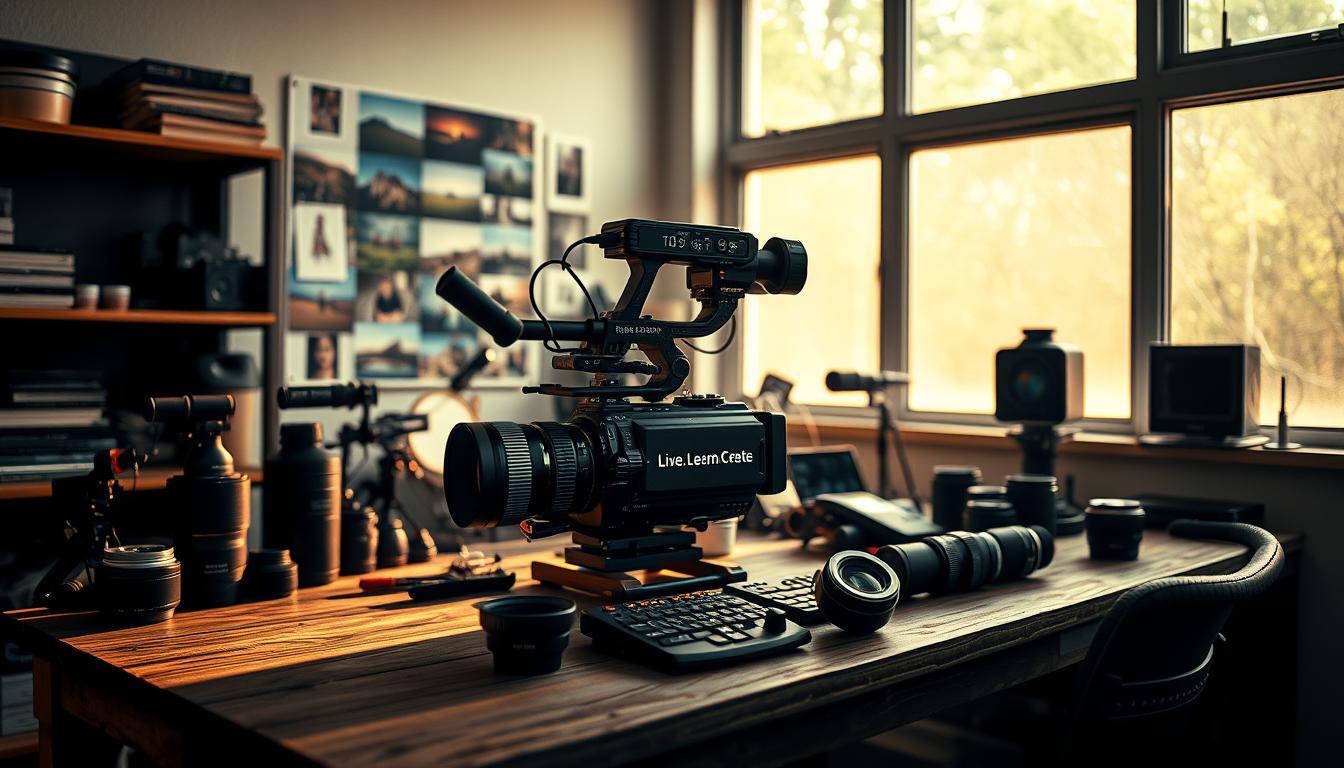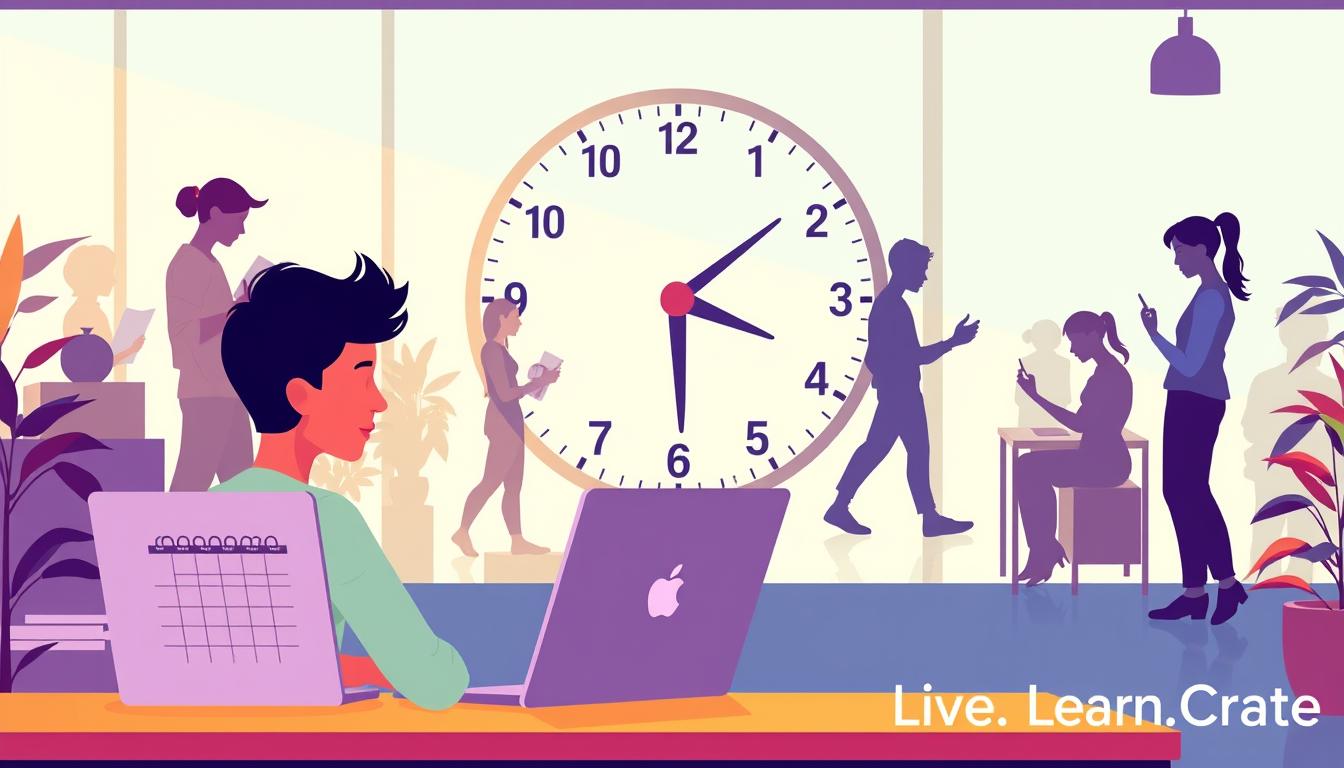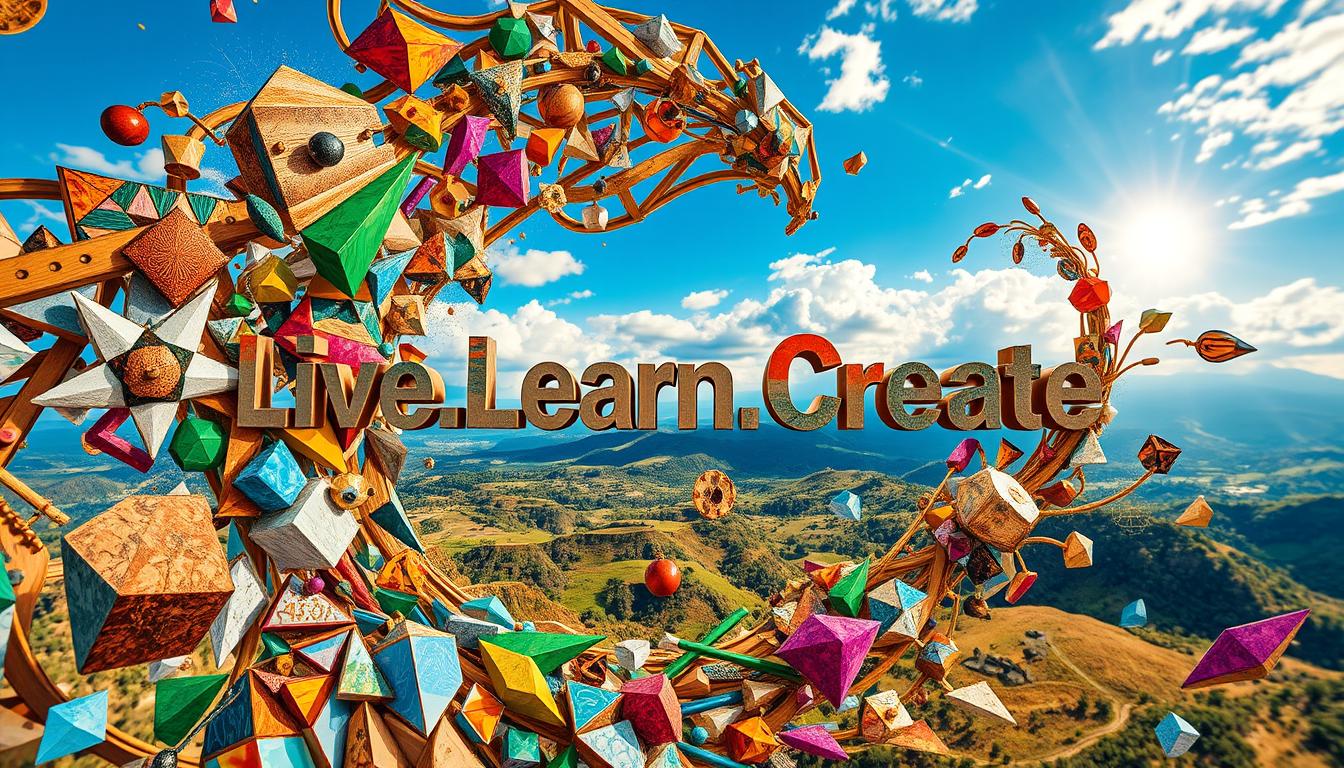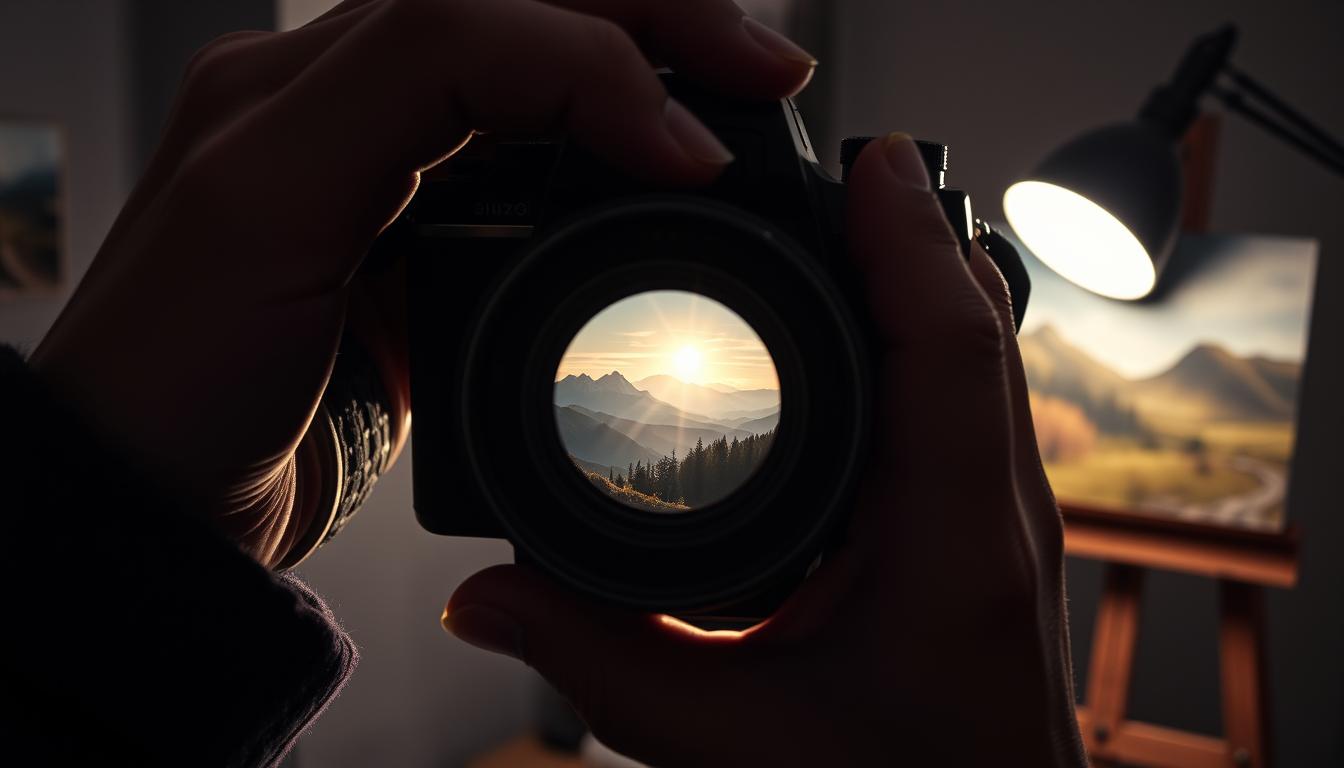Have you ever wondered why some people seem to effortlessly turn ideas into reality while others struggle to start? Creativity isn’t just for artists—it’s a powerful tool for problem-solving, personal growth, and finding joy in everyday life. Whether you’re sketching, writing, or brainstorming solutions, that spark is already within you.
Carmen Galloway, a celebrated author and educator, believes everyone can nurture their creative instincts. Her books, available on Barnes & Noble and Apple Books, offer practical insights. For structured learning, her Udemy courses guide you step-by-step—because creativity thrives with practice, not perfection.
Science shows that embracing creativity builds resilience and fosters deeper connections—with yourself and the world. This article is your roadmap to awakening that potential. Let’s begin.
Key Takeaways
- Creativity enhances problem-solving and personal fulfillment.
- Carmen Galloway’s books and courses provide accessible guidance.
- Artistic expression is just one facet of creative thinking.
- Small, mindful habits can ignite your creative spark.
- Self-doubt fades with consistent practice and encouragement.
What Is Creativity and Why Does It Matter?
IBM calls creativity the #1 skill for success—but what makes it so powerful? Linda Naiman defines it as “turning ideas into reality through novel connections.” It’s not just paint on canvas; it’s how we reimagine problems, from fixing a leaky faucet to designing apps.
The Science Behind Creative Thinking
Your brain thrives on making connections. Neuroscientists call it associative thinking—linking unrelated ideas, like how Maria Popova’s “combinatorial creativity” blends books, science, and art. George Land’s research found that 98% of 5-year-olds score as creative geniuses, but only 2% of adults do. The good news? It’s a skill you can relearn.
Take HP’s “Rules of the Garage”:
- Believe you can change the world.
- Work quickly, stay open.
- Share tools and ideas.
This mindset built Silicon Valley. Your brain works the same way—pattern recognition fuels breakthroughs.
How Creativity Fuels Personal and Professional Growth
Adobe’s study reveals a “creativity gap”: 80% of people feel pressured to be productive, not innovative. Yet, in an AI-driven economy, creative jobs grow 3x faster. It’s not about inspiration; it’s practice. Cooking a new recipe or rearranging your garden? That’s thinking outside the box.
“Creativity is intelligence having fun.” — Albert Einstein
From Mozart’s 16-year mastery curve to Dr. Seuss’s 50-word challenge, history’s greats prove: discipline beats talent. Start small. Capture ideas. Watch how your work—and world—transforms.
Debunking 5 Myths About Creativity
Society often boxes creativity into narrow categories—let’s break free. From schoolrooms to workplaces, outdated beliefs convince people they’re either “creative” or not. Science tells a different story.
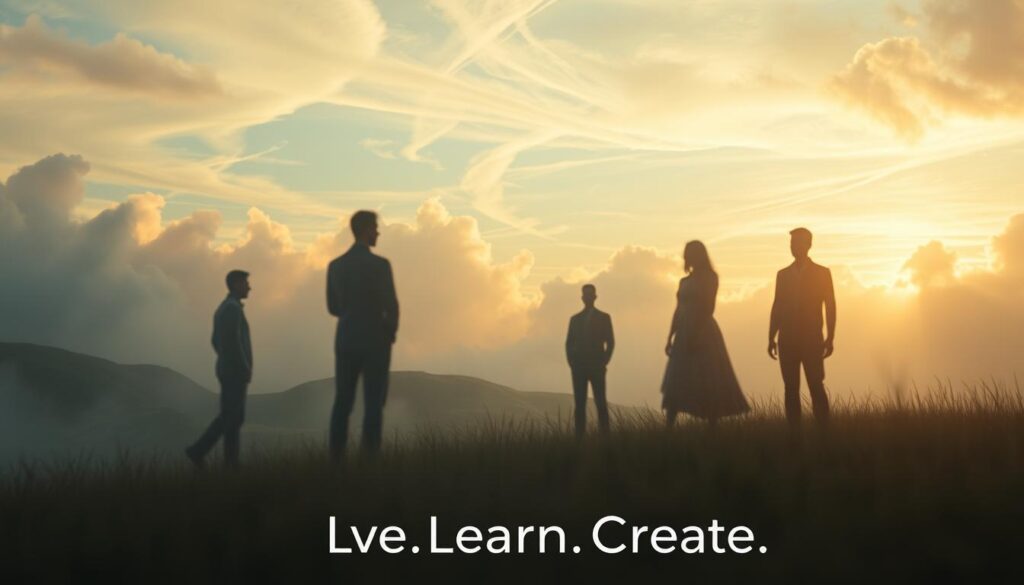
Myth 1: Only Artists Are Creative
Creativity isn’t confined to paintbrushes or poetry. A company like HP thrived by encouraging engineers to “share tools and ideas.” Dr. Seuss wrote Green Eggs and Ham using just 50 words—a constraint that sparked innovation.
Myth 2: You’re Either Born Creative or Not
Exeter University research found no “creativity gene.” Robert Epstein’s generativity theory shows it’s a skill built through practice. Mozart’s 16-year mastery timeline proves even genius takes time.
“The brain is like a muscle—it grows stronger with use.” — Dr. Barbara Oakley
Education systems often suppress natural curiosity. A study of 1,500 people revealed that 72% felt less creative after high school. Yet, neural plasticity means we can rewire our brains at any age.
- Try this: Jot down 10 wild ideas daily—quantity trains your brain for quality.
- Redefine creativity: Rearranging your closet or testing new recipes counts.
The Psychology of Creativity
Your brain works in mysterious ways—especially when it comes to generating fresh ideas. Neuroscience shows that our most innovative moments often arise when we’re not actively trying. This isn’t magic; it’s the psychology of how your mind connects dots in the background.
How Your Brain Generates Innovative Ideas
The brain’s default mode network lights up during daydreaming or showers—times when we’re relaxed. James Webb Young’s 5-step creative process explains this beautifully:
- Gather raw material (research, experiences).
- Let your mind subconsciously digest it.
- Wait for the “aha” moment (incubation).
- Shape the idea into reality.
- Test and refine it.
Barbara Kerr’s research suggests genetics influence only 22% of creative output. The rest? Trainable skills—like switching between focused problem-solving and diffuse, big-picture thinking.
The Role of Mindfulness in Creative Work
Nobel laureates like Linus Pauling credited walks for breakthroughs. Why? Mindfulness quiets the inner critic, letting your brain explore freely. Try this:
- Pause for 3 breaths before starting a project.
- Use blue or green accents in your workspace—colors linked to calm insight.
- Journal messy thoughts without judgment.
“You can’t rush creativity. It’s about creating space for the mind to wander.” — Dr. Scott Barry Kaufman
When stuck, step away. A Stanford study found walks boost divergent thinking by 60%. Your best ideas might be waiting where you least expect them.
Practical Ways to Cultivate CREATIVITY Daily
History’s most prolific creators didn’t rely on motivation—they built systems. From Anthony Trollope’s 15-minute writing rituals to Google’s “20% time” policy, structured practice beats sporadic inspiration. Here’s how to make imaginative thinking a natural part of your day.
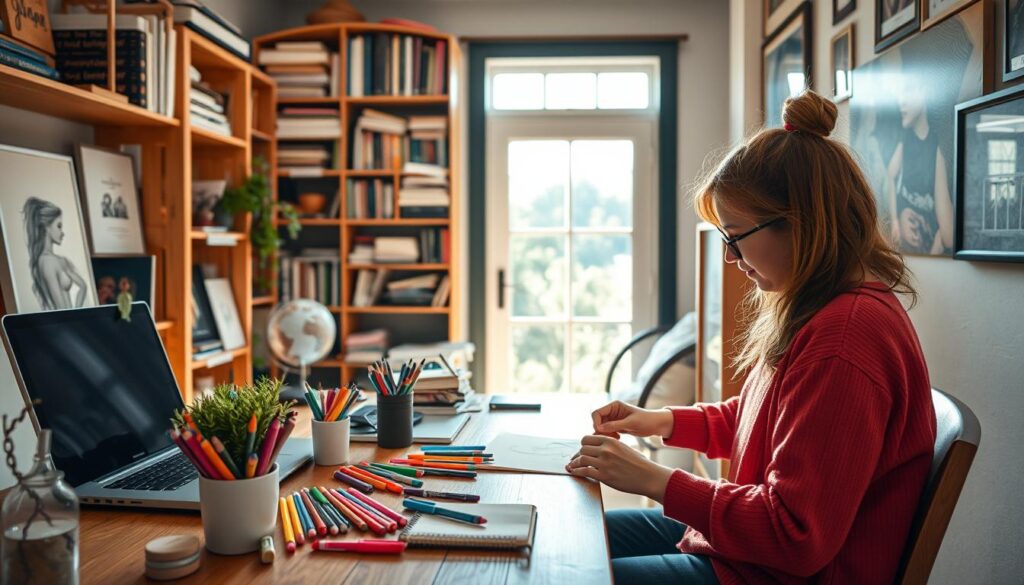
Step 1: Create an “Idea Capture” Habit
Richard Branson’s ABCDs framework starts with Action—recording thoughts immediately. Carry a pocket notebook or use voice memos when sparks strike. Studies show we forget 40% of new ideas within an hour.
Try these ways to build the habit:
- Keep a journal by your bed for morning “brain dumps”
- Set phone reminders to pause and observe your surroundings twice daily
- Use the “ugly first draft” approach—quantity fuels quality
Step 2: Embrace Constraints to Spark Innovation
Clayton Christensen found innovators excel at associating unrelated things. Try his “job-to-be-done” method:
“Limit your tools or time deliberately. The best solutions emerge from necessity.”
Test it with kitchen timer challenges—write a six-word story in 90 seconds. Or rearrange your workspace using only items within arm’s reach. Like Dr. Seuss’s 50-word masterpiece, boundaries force inventive thinking.
Remember: Creative muscles grow through daily steps, not grand gestures. What small ritual will you start today?
Carmen Galloway’s Tools for Creative Transformation
What if the right tools could turn your creative sparks into lasting flames? For over a decade, celebrated author Carmen Galloway has designed resources to help people bridge the gap between ideas and action. Her books and courses blend research-backed methods with hands-on experience—because growth thrives when theory meets practice.
Books Now Available: Barnes & Noble and Apple Books
Carmen’s bestselling guides, like The Creative Habit Blueprint, distill complex concepts into actionable steps. Each chapter includes:
- Tools like the “creativity audit” worksheet to assess your strengths
- Real-world exercises (try rearranging your workspace in 10 minutes)
- Stories from her journey—from drafting ideas on napkins to publishing
Download free sample chapters on Barnes & Noble or Apple Books, or use code CREATE20 for an exclusive reader discount.
Udemy Courses to Structure Your Creative Practice
Prefer interactive learning? Carmen’s Udemy courses, rated 4.9/5 by 12,000+ students, offer video lessons and templates. One graduate shared:
“The 30-day challenge transformed my morning routine—I now generate 10 ideas before breakfast!”
Compare formats with this cheat sheet:
- Books: Deep dives + self-paced reflection
- Courses: Structured modules + community feedback
Start today with a free module on “Building Idea-Capture Systems”—because the best information is the kind you’ll actually use.
Lessons from History’s Greatest Creative Minds
From Mozart’s disciplined practice to Dr. Seuss’s playful constraints, timeless lessons await. These icons didn’t rely on talent alone—they crafted routines that turned effort into enduring work. Let’s uncover how their seemingly simple habits can ignite your own potential.
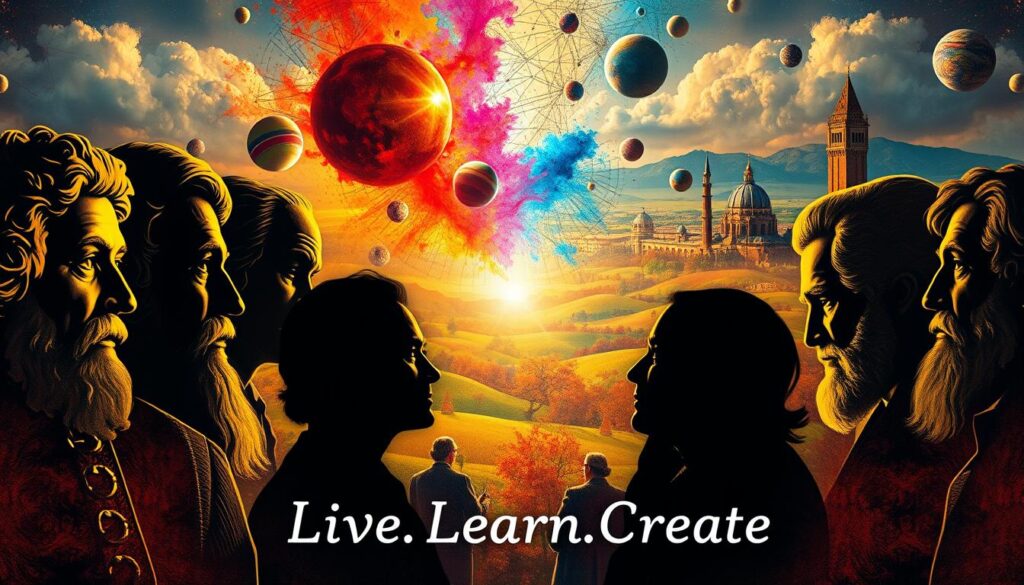
Dr. Seuss’s 50-Word Challenge
When Bennett Cerf bet Theodor Geisel (Dr. Seuss) he couldn’t write a book with just 50 words, the result was Green Eggs and Ham. This playful constraint forced inventive ways to express ideas succinctly—proof that limits often fuel breakthroughs.
Try this today: Set a timer for 10 minutes and draft a story using only 10 words. Like Seuss, you’ll discover constraints sharpen your focus.
Mozart’s 16-Year Mastery Curve
Wolfgang Amadeus Mozart’s early compositions were forgettable. His genius emerged only after 16 years of daily practice—10,000 hours before his first masterpiece. Neuroscientists call this the “expertise plateau,” where deliberate repetition rewires the brain.
“You can’t wait for inspiration. You have to go after it with a club.” — Jack London
Modern studies confirm this: Violin players who logged 7,400+ hours by age 18 outperformed peers. Progress takes time, but small daily steps compound.
Timeless Habits, Modern Applications
History’s creators shared surprising similarities:
- Da Vinci’s notebooks: He filled 7,000 pages with sketches and questions—a habit mirrored in modern bullet journaling.
- Edison’s “failure resume”: He documented 1,000 unsuccessful experiments, treating each as data, not defeat.
- Maya Angelou’s ritual: The author rented a sparse hotel room daily to write, proving environment shapes output.
Their work reminds us: Greatness isn’t born—it’s built, one ordinary day at a time.
How to Overcome Creative Blocks
Creative blocks don’t mean you’ve failed—they’re signposts pointing toward growth. Even Picasso faced 30 rejected drafts before Guernica. The problem isn’t lack of talent; it’s how we respond when ideas stall.
When to Walk Away (and Why It Works)
James Webb Young’s research reveals an incubation period—when stepping away lets your subconscious solve problems. Like a baker resting dough, your mind needs pauses to rise.
Try these science-backed ways to leverage breaks:
- Strategic procrastination: Set a timer for 25-minute focus bursts, then take 5-minute walks
- The “10-10-10 rule”: Spend 10 seconds observing your surroundings, 10 breaths, then 10 minutes on a mundane task
- Keep an “idea compost” journal for fragments to revisit later
“Creative resilience isn’t avoiding blocks—it’s developing navigation tools for them.” — Dr. Barbara Kerr
Rebuilding Confidence After Criticism
Pixar’s “plussing” technique transforms feedback: instead of “This doesn’t work,” try “What if we explored…” This behavior preserves creative courage while improving output.
Build your comeback toolkit:
- Create a “failure resume” highlighting lessons from setbacks
- Practice emotional detachment—critique the work, not your worth
- Join peer circles where vulnerability fuels growth (like Julia Cameron’s artist dates)
Remember: Every breakthrough—from Edison’s bulbs to Lin-Manuel Miranda’s drafts—began with someone choosing to begin again. Your next spark is closer than you think.
Conclusion: Your Creative Journey Starts Now
The path to creative growth begins with a single step—yours. Remember: small acts—like jotting ideas or trying Carmen’s 30-day challenge—reshape your life over time. Doubt may whisper, but every master was once a beginner.
Carmen’s books and courses turn theory into action. Use code CREATE20 to start today. Her Udemy students often share: “I didn’t wait for inspiration—I learned to build it.”
Creativity thrives when you act. Download the free checklist below. Rearrange your desk. Doodle while coffee brews. Like physical health, imaginative muscles strengthen with use.
“Start where you are. The world needs your voice.” — Carmen Galloway
Your turn begins now. What will you create today?
Explore a range of resources designed to enhance your creative skills. Whether you’re looking for inspiration or structured guidance, Carmen Galloway’s works provide valuable insights into the creative process.
Join interactive courses that challenge you to think differently and expand your creative horizons. Each course is crafted to help you develop a robust creative mindset.
FAQ
Can anyone develop creative thinking skills?
Absolutely! Your brain naturally thrives on making connections—it just takes practice. Small daily habits, like journaling or brainstorming, strengthen your ability to generate fresh ideas over time.
How does psychology explain breakthrough moments?
Research shows insights often come when we’re relaxed. Your subconscious keeps working even during breaks, which is why walks or showers spark sudden solutions.
What’s the fastest way to overcome creative blocks?
Shift your focus. Trying too hard activates the brain’s stress response. Simple tools like timed exercises or changing your environment can restart your flow.
Why do constraints actually help innovation?
Limits force your mind to explore unusual paths. Think of Dr. Seuss writing “Green Eggs and Ham” with just 50 words—boundaries often reveal surprising possibilities.
Where can I find structured guidance for creative growth?
Carmen Galloway’s books at Barnes & Noble and Udemy courses offer step-by-step methods—like her “Idea Capture” system—to build confidence in your unique process.
How long does it take to see progress?
Like Mozart’s 16-year mastery curve, small consistent efforts compound. Most people notice improved problem-solving within weeks when practicing daily.
Transform your home into a more peaceful and mindful sanctuary. Creating a Zen-inspired home environment is a core part of the “Live.Learn.Create” theme, focusing on peace, mindfulness, and a clutter-free space. Here is a curated list of Zen home items.
The Zen Essentials
These items are the building blocks of a calm, intentional living space.
- Candles & Scents:
- Scented Candles: Look for calming, natural scents like sandalwood, lavender, white tea, or bergamot. Choose candles made with soy or beeswax for a clean burn.
- Essential Oil Diffusers: A minimalist, sleek diffuser made of bamboo, ceramic, or glass.
- Essential Oil Sets: Look for blends specifically for relaxation, focus, or sleep.
- Incense & Burners: Natural incense sticks (e.g., palo santo, sage) with a simple, elegant burner.
The Zen Decor
This is about incorporating natural elements and simple design.
- Natural Materials:
- Wood or Bamboo Trays: For organizing candles, stones, or other small items.
- Ceramic Vases: Simple, unglazed ceramic vases in neutral colors like white, beige, or gray.
- Minimalist Art: Simple line drawings, abstract prints, or nature-inspired artwork.
- Hand-Carved Stone Coasters: Or other small stone sculptures.
- Textiles:
- Linen or Cotton Throws: A soft, neutral-colored throw blanket to add warmth.
- Jute or Sisal Rugs: These add natural texture and grounding to a space.
- Meditation Cushions (Zafu) & Mats (Zabuton): These provide comfort for meditation and add a serene touch to a room.
The Zen Ambiance
These items help create a peaceful sensory experience.
- Lighting:
- Himalayan Salt Lamps: These provide a warm, soft glow.
- Japanese-style Paper Lanterns: For a soft, diffused light source.
- Dimmable Smart Bulbs: To easily control the warmth and brightness of your lighting.
- Sound:
- Tabletop Water Fountains: The gentle sound of running water is incredibly calming.
- Wind Chimes: Made from natural materials like bamboo or metal for a soft sound.
- Bluetooth Speakers: Small, aesthetically pleasing speakers for playing ambient or meditation music.
- Nature:
- Bonsai Trees or Air Plants: Low-maintenance indoor plants that bring life and a touch of nature indoors.
- Zen Gardens: A small, tabletop sand garden with a rake and stones for a meditative ritual.
- Decorative Rocks & Pebbles: For bowls or as a decorative element.
Best Sellers https://amzn.to/3Vet1tI
New Releases https://amzn.to/4mwLjTi
Amazon Movers & Shakers https://amzn.to/4fPsZlP
Mindfulness Coloring Books https://amzn.to/4fQ0wMx
Personal Growth Coloring Books https://amzn.to/4lJeRf0
Health & Wellness https://amzn.to/4oRt24C
Zen Home Decor https://amzn.to/3VeA3i6
Zen Garden Decor https://amzn.to/4mXjT8D
Zen Garden https://amzn.to/3HQTVVB
- Mindfulness & Meditation:
- Physical Wellness:
- Habit & Productivity Tools:
- Books:
- Best-selling personal development books (Mindset, The 7 Habits of Highly Effective People, The Subtle Art of Not Giving a F*ck)
- Books on a variety of skills (coding, photography, writing.)
- Educational Gadgets:
- Smart pens that digitize notes (e.g., Rocketbook)
- Portable scanners for digitizing documents
- Laptops, tablets, and accessories
Create (Creativity, Innovation, Projects)
These products cater to your creative side, whether you are a artists, writer, or DIY enthusiasts.
- Creative Supplies:
- Adult coloring books or “paint-by-sticker” books
- Craft kits (e.g., candle-making, pottery, embroidery)
- Digital Creation Tools:
- General Inspiration & Making:

